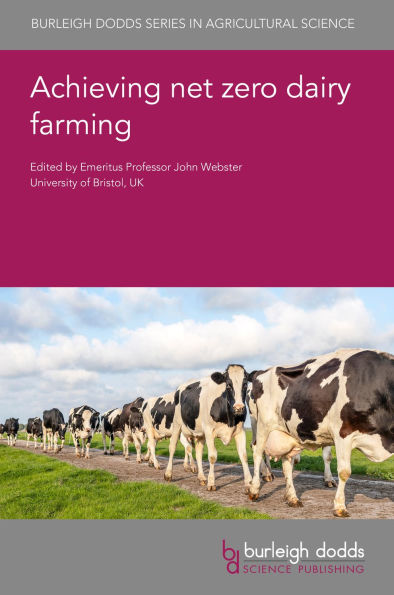Achieving Net Zero Dairy Farming
To meet the targets outlined in the 2015 Paris Agreement, many countries are actively working towards reaching climate neutrality and achieving net zero by 2050. With the livestock sector estimated to contribute approximately 11-17% of global greenhouse gas emissions, more research and innovation is required to understand the cause of these emissions and how they can be reduced.
Achieving net zero dairy farming provides a detailed insight into the fundamental processes within the dairy cow and those that occur on dairy farms that contribute to and reduce greenhouse gas emissions. The book also considers the range of strategies which can be implemented to support the transition to net zero, including improving housing and housing management, supplementing diets with methane-inhibiting feed additives and optimising manure/slurry application.
1146291842
Achieving net zero dairy farming provides a detailed insight into the fundamental processes within the dairy cow and those that occur on dairy farms that contribute to and reduce greenhouse gas emissions. The book also considers the range of strategies which can be implemented to support the transition to net zero, including improving housing and housing management, supplementing diets with methane-inhibiting feed additives and optimising manure/slurry application.
Achieving Net Zero Dairy Farming
To meet the targets outlined in the 2015 Paris Agreement, many countries are actively working towards reaching climate neutrality and achieving net zero by 2050. With the livestock sector estimated to contribute approximately 11-17% of global greenhouse gas emissions, more research and innovation is required to understand the cause of these emissions and how they can be reduced.
Achieving net zero dairy farming provides a detailed insight into the fundamental processes within the dairy cow and those that occur on dairy farms that contribute to and reduce greenhouse gas emissions. The book also considers the range of strategies which can be implemented to support the transition to net zero, including improving housing and housing management, supplementing diets with methane-inhibiting feed additives and optimising manure/slurry application.
Achieving net zero dairy farming provides a detailed insight into the fundamental processes within the dairy cow and those that occur on dairy farms that contribute to and reduce greenhouse gas emissions. The book also considers the range of strategies which can be implemented to support the transition to net zero, including improving housing and housing management, supplementing diets with methane-inhibiting feed additives and optimising manure/slurry application.
200.0
Pre Order
5
1

Achieving Net Zero Dairy Farming
400
Achieving Net Zero Dairy Farming
400
200.0
Pre Order

Product Details
| ISBN-13: | 9781835450185 |
|---|---|
| Publisher: | Burleigh Dodds Science Publishing Ltd |
| Publication date: | 01/27/2026 |
| Series: | Burleigh Dodds Agricultural Science , #171 |
| Pages: | 400 |
| Product dimensions: | 6.00(w) x 9.00(h) x 0.00(d) |
About the Author
From the B&N Reads Blog
